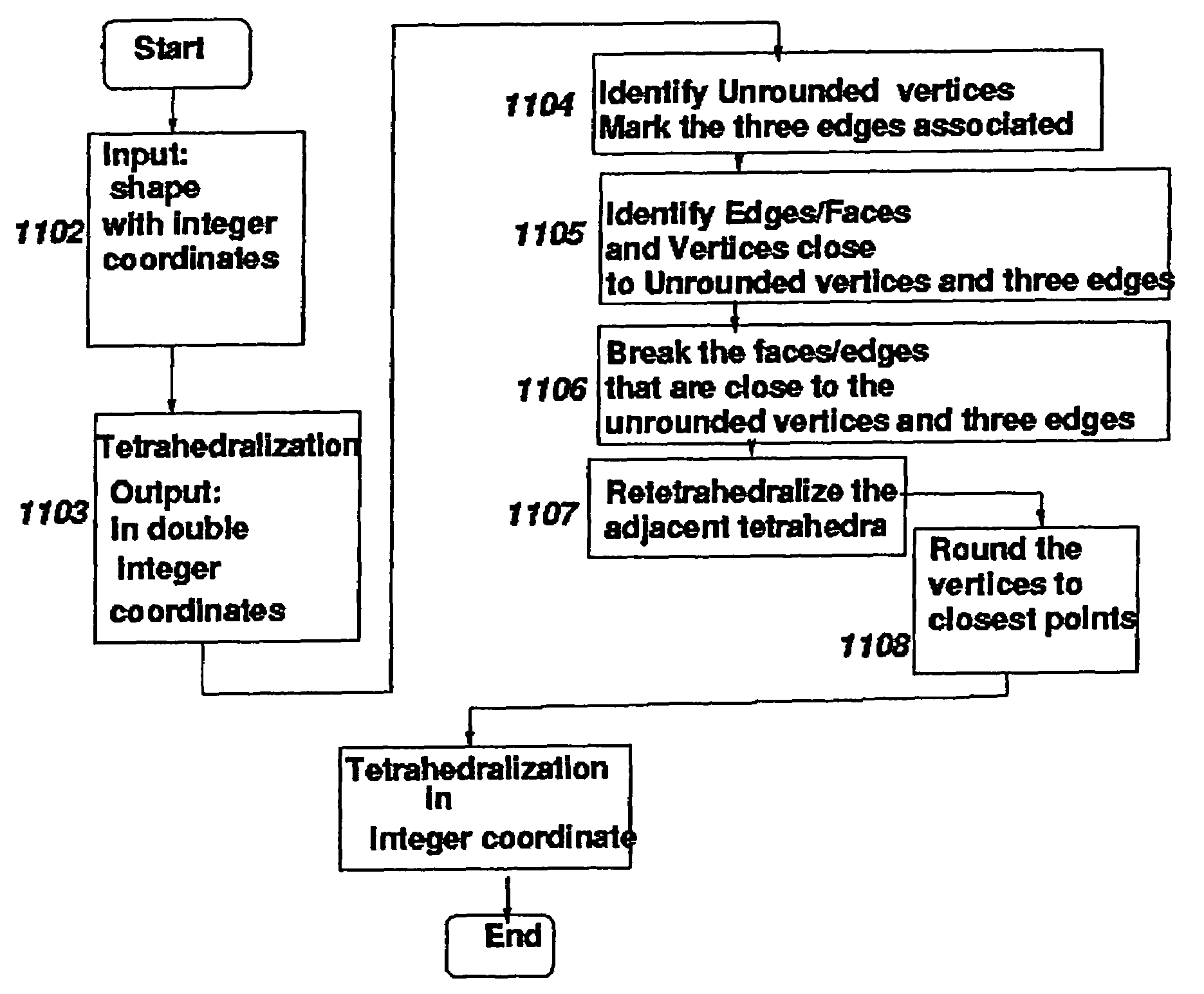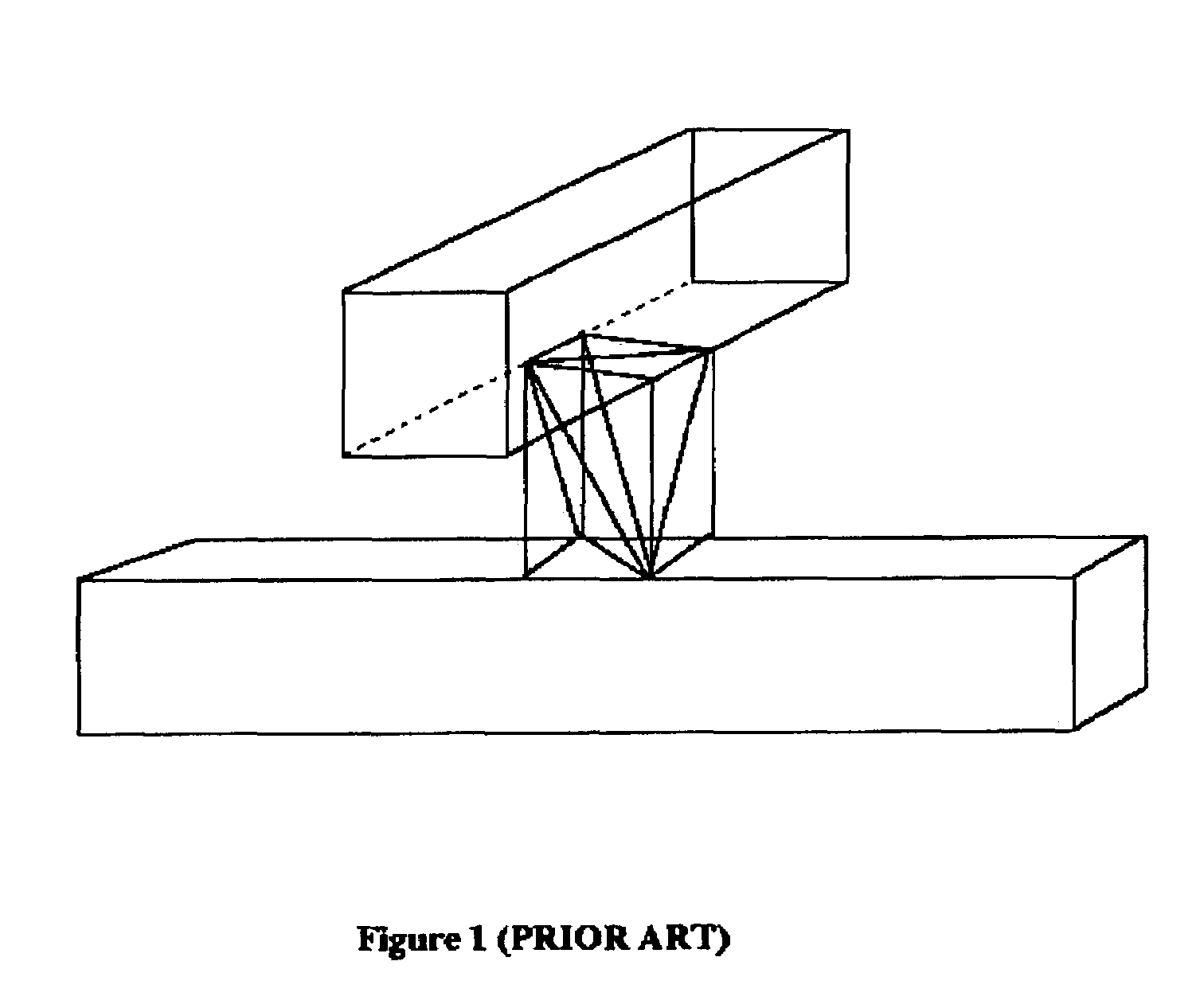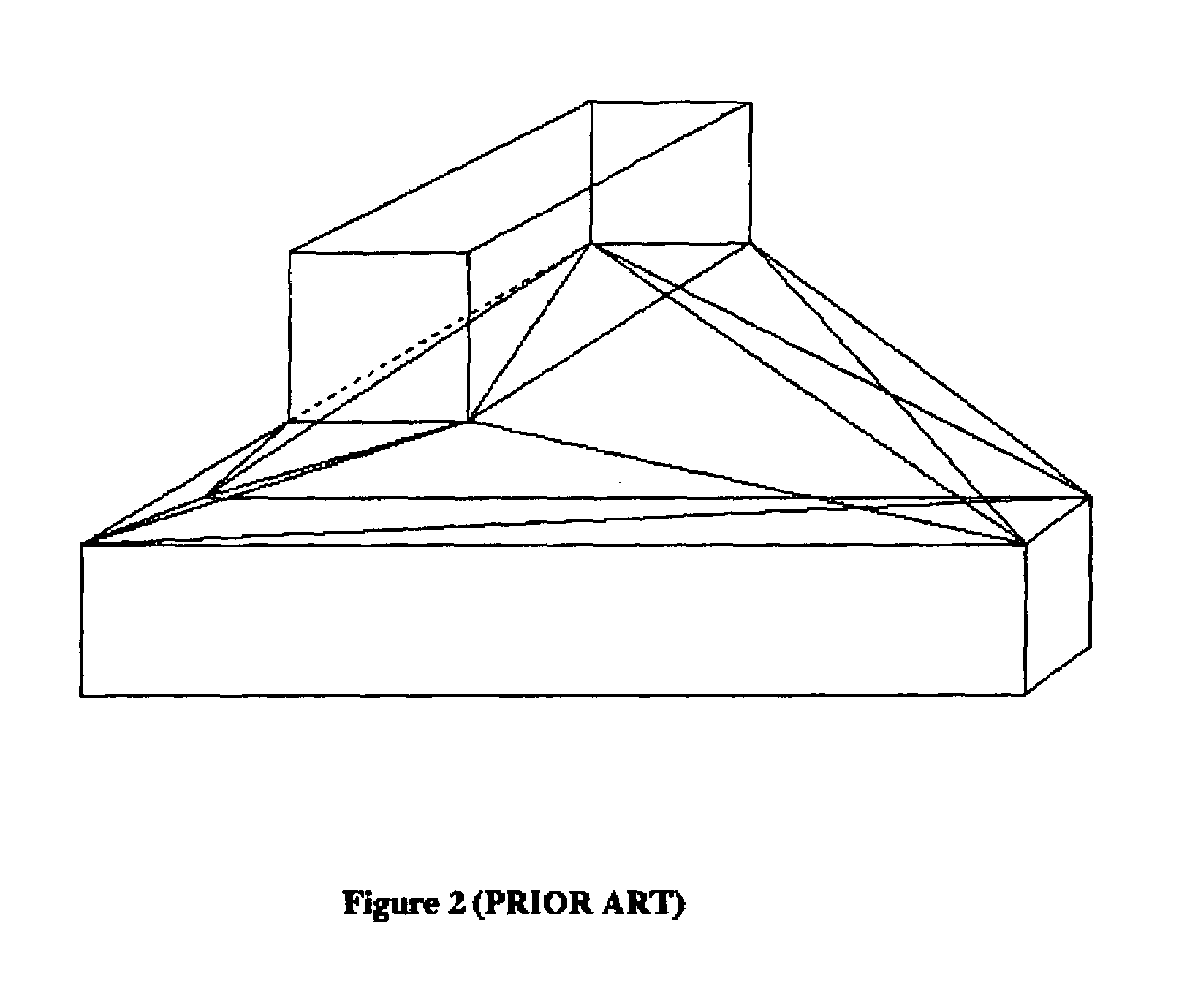Robust tetrahedralization and triangulation method with applications in VLSI layout design and manufacturability
a tetrahedralization and triangulation technology, applied in static indicating devices, error detection/correction, instruments, etc., can solve the problem that the geometric and topological properties of tetrahedralization are no longer satisfied, and none of the aforementioned patents address the round-off problem in tetrahedralization or numerical problems, so as to prevent topological inconsistencies and prevent volume inversion
- Summary
- Abstract
- Description
- Claims
- Application Information
AI Technical Summary
Benefits of technology
Problems solved by technology
Method used
Image
Examples
Embodiment Construction
[0054]The present invention is based on the Proximity Based Rounding method designed to handle 3-D meshes in the following manner:[0055]1. To reduce the amount of storage required (e.g., 32-bit integer coordinates used instead of 64-bit floating point numbers);[0056]2. To eliminate the need for CPU intensive extended precision coordinate operations; and[0057]3. To eliminate sliver or flat tetrahedra results in a mesh with a better condition number, resulting in less numerical error for both direct and indirect methods of finite element analysis and for their faster convergence for iterative.
[0058]The preferred embodiment of the current methodology is illustrated in FIG. 11. Therein, the current state of the art as defined in FIG. 7 is extended by a novel approach depicted in boxes 1104 through 1108.
[0059]Referring back to FIG. 6 that illustrates some basic assumptions applicable to the process of tetrahedralization for extracting parasitic capacitance, there is shown a numerical rep...
PUM
 Login to View More
Login to View More Abstract
Description
Claims
Application Information
 Login to View More
Login to View More - R&D
- Intellectual Property
- Life Sciences
- Materials
- Tech Scout
- Unparalleled Data Quality
- Higher Quality Content
- 60% Fewer Hallucinations
Browse by: Latest US Patents, China's latest patents, Technical Efficacy Thesaurus, Application Domain, Technology Topic, Popular Technical Reports.
© 2025 PatSnap. All rights reserved.Legal|Privacy policy|Modern Slavery Act Transparency Statement|Sitemap|About US| Contact US: help@patsnap.com



